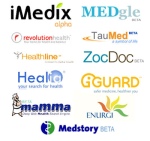I watched a short video summarizing the need for a change in the pharmaceutical marketing model. It was made by Matt Rowley of The Central Group in London.
New Pharma Marketing from Matt Rowley on Vimeo
Matt makes some fantastic points that ring true in today’s rapidly changing healthcare market. He makes the point that life sciences and pharmaceutical marketers must move away from the old ‘reach and frequency’ model and move towards a commercialization and marketing model based on the Rogers Diffusion Model.
Rogers Diffusion Model is based on the effect of networks on the adoption of new innovations and the importance of local, regional and national opinion leaders on the adoption process. Each has a different role to play and the new marketing model will align the role of the opinion leader with the adoption process. Rogers’ model also emphasizes the importance of networks and relationships on learning and adoption behavior. The amazing part of all this is that none of this is new…Rogers ‘Diffusion of Innovations’ is in the 5th Edition and the first study in pharmaceuticals studying the effect of physician networks on the adoption of a new product was done in 1955 by Pfizer!
If you haven’t read Rogers ‘Diffusion of Innovations’, it is a must read for anyone who wants to understand how networks affect the adoption process. Watch Matt’s video and change your fundamental assumptions about marketing!
 Great article in The Economist, “A Special Report on Healthcare and Technology. Health 2.0”
Great article in The Economist, “A Special Report on Healthcare and Technology. Health 2.0” 
You must be logged in to post a comment.